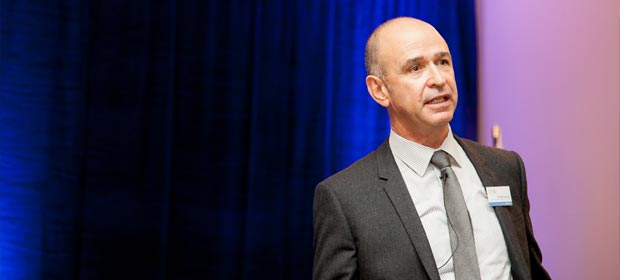Winter is here and the papers are full of the challenges that healthcare systems are facing with increasing demand on acute care and the impact it has had on the provision of healthcare in general. Politicians and ministers apologise, healthcare planners plan without any impact, managers manage in crisis mode, clinicians work harder and harder and patients suffer on trolleys or with cancelled interventions. Sounds familiar – I am describing the NHS in the UK rated as the leading healthcare provider by the Commonwealth Fund, writes Dr Peter Lachman.

The solution that is given on TV and in the press and called for by managers and clinicians is simple. One word defines it all – MORE …. more money, more nurses and doctors, more beds, more of everything! Yes, the service is relatively underfunded but can we say we are doing the right thing?
Now in Ireland, the problems are the same, a population with increasing demand through aging and the success of medicine in keeping people alive, the challenges of persons with long-term conditions demanding an integrated approach and a health system not designed to address the challenges it faces. And of course, the lack of financing in the right place.
Experts are brought from the USA usually with slick IT solutions and very limited real success.
There is no easy solution to the problem of demand exceeding the supply. Experts are brought I from the USA usually with slick IT solutions and very limited real success. We adopt Lean or Microsystems and expect miracles. However, the fundamental issue is divorcing health from social care. looking at disease rather than health and containing to develop healthcare in a way that is more fit for the 20th century.
And the way we have designed healthcare means that the solutions are not easily found. So here are some ideas:
- We cannot continue to provide healthcare the way we do with hospitals designed for the diseases of the 20th century as being the focus of all we do.
- We need to think of new models of care, doing the same thing each winter simply will not work.
- Redesign the hospital system so that acute care does not interfere with scheduled care. This cannot be achieved by the current design and way we organise care.
- The idea of having the hospital as the provider of healthcare is outmoded and needs to be rethought. This will require difficult political decisions as we will need to merge services and amalgamate so we become more cost effective and more relevant.
- Provision of care with a focus on prevention, self-management and care over the course of the disease is needed over the course of the disease
- The move from disease management to health management as part of healthcare delivery is key solution but requires a culture change.
- We could consider the WHO approach to integrated care that could possibly focus a change and implement the five interventions:
• Engaging and empowering people and communities;
• Strengthening governance and accountability;
• Reorienting the model of care;
• Coordinating services within and across sectors;
• Creating an enabling environment.
http://www.who.int/servicedeliverysafety/areas/people-centred-care/en/ - We need to activate the community and people to actively manage their own care and perhaps look at the models of care that have made a difference. An example is NUKA in Alaska. Here the community own the healthcare and are full and equal partners in designing the services they need. “Southcentral Foundation’s Nuka System of Care (Nuka) is a relationship-based, customer-owned approach to transforming health care, improving outcomes and reducing costs.” https://www.southcentralfoundation.com/nuka-system-of-care/
- We need to change the way we train our health workforce so that the can provide integrated care both in and outside hospitals.
Basically, we need to change what we do – more money and more resources are short term fixes. Politicians, funders, planners, managers, clinicians and patients now need to take stock. More of the same will not work – we need a new model and need to make difficult choices rather than stat another round of “winter planning.”

